Technology
Pulsar Instruments
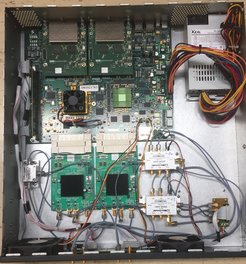
The current generation of pulsar instruments at the Effelsberg 100-m were installed in three phases starting from 2009. The pulsar Fast Fourier transform spectrometer (PFFTS) was installed in 2009. The PFFTS is hardwired to the 7-beam receiver and has a fixed firmware that generates 512-channels over 300 MHz at 54 μs time resolution. The PFFTS was designed in-house within the signal processing department. The PSRIX system is based on the ROACH1 board developed by the CASPER consortium. This instrument was brought in to regular operations in 2011. The PSRIX2 instrument is based on ROACH2 platform (also developed by CASPER) and was put in to operation in 2017. [more]
LEAP
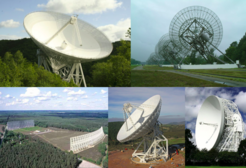
The Large European Array for Pulsars (LEAP) is an EU-funded innovative project that will link the major radio telescopes of Europe to create the world's most sensitive, steerable radio telescope. Through the coherent combination of the signals from all telescopes, we will create the equivalent of a 200-m large telescope. This “super telescope” will allow us to observe pulsars with very large sensitivity, which in turn will greatly increase the precision of our pulse time of arrival measurements. With this gain in sensitivity and precision, we hope to finally detect gravitational waves directly in a pulsar timing array experiment. [more]
PAF

A PAF receiver is a dense array of antenna elements at the focus of a reflector telescope and the output of these elements can be combined to form beams on the sky. The direction of these beams is controlled by varying the weighting of individual elements of the PAF. The PAF system described here was designed for the Australian Square Kilometer Array Pathfinder (ASKAP) telescope, but slightly modified for use on the Effelsberg telescope. [more]
UBB
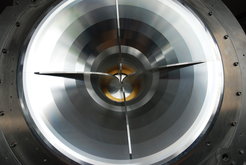
Ultra Broad Band receiver (UBB) - In order to carry out the most stringent tests ever of Einstein's General Relativity, our group pioneered the development of a new ultra broadband radio receiver (with frequency coverage between 0.6 and 3.0 GHz) for use at our Effelsberg 100-m radiotelescope. [more]
Novel Processing techniques
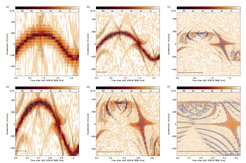
Pulsar searching is a “Big Data” problem. All our searches are limited simply by the available computing power (even though we currently already use High Performance Computing facilities in Germany, UK, France, and Australia). This demands the usage of a number of novel processing techniques, such as utilizing large computing power via a “citizen science” project like the Einstein@Home project of our AEI colleagues in Hannover, as well as machine learning algorithms to reduce that amount of human interaction. Our group successfully applies all these methods and has pioneered many of them together with our colleagues in Manchester (more press releases on Einstein@Home: 12.8.2010, 26.11.2013, 8.12.2016, and 28.2.2018).
LOFAR

Low Frequency Array (LOFAR) - This new interferometric radio telescope in Europe has incredible sensitivity at radio frequencies between 30 and 240 MHz, and it is opening up an entire new region of the radio spectrum. Our group is using this new instrument to study pulsars, distant galaxies and the interstellar medium. [more]
SKA
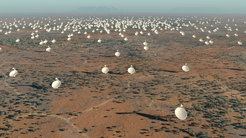
The Square Kilometre Array - a technology telescope of superlatives. It will be "the" next generation multi-tasking radio interferometer and the world's premier imaging and survey telescope with a combination of unprecedented versatility and sensitivity. The SKA will not only open up new windows of discovery space in radioastronomy, it will also revolutionise cosmology and gravitational physics. Our group is involved to make this telescope happen. [more]






